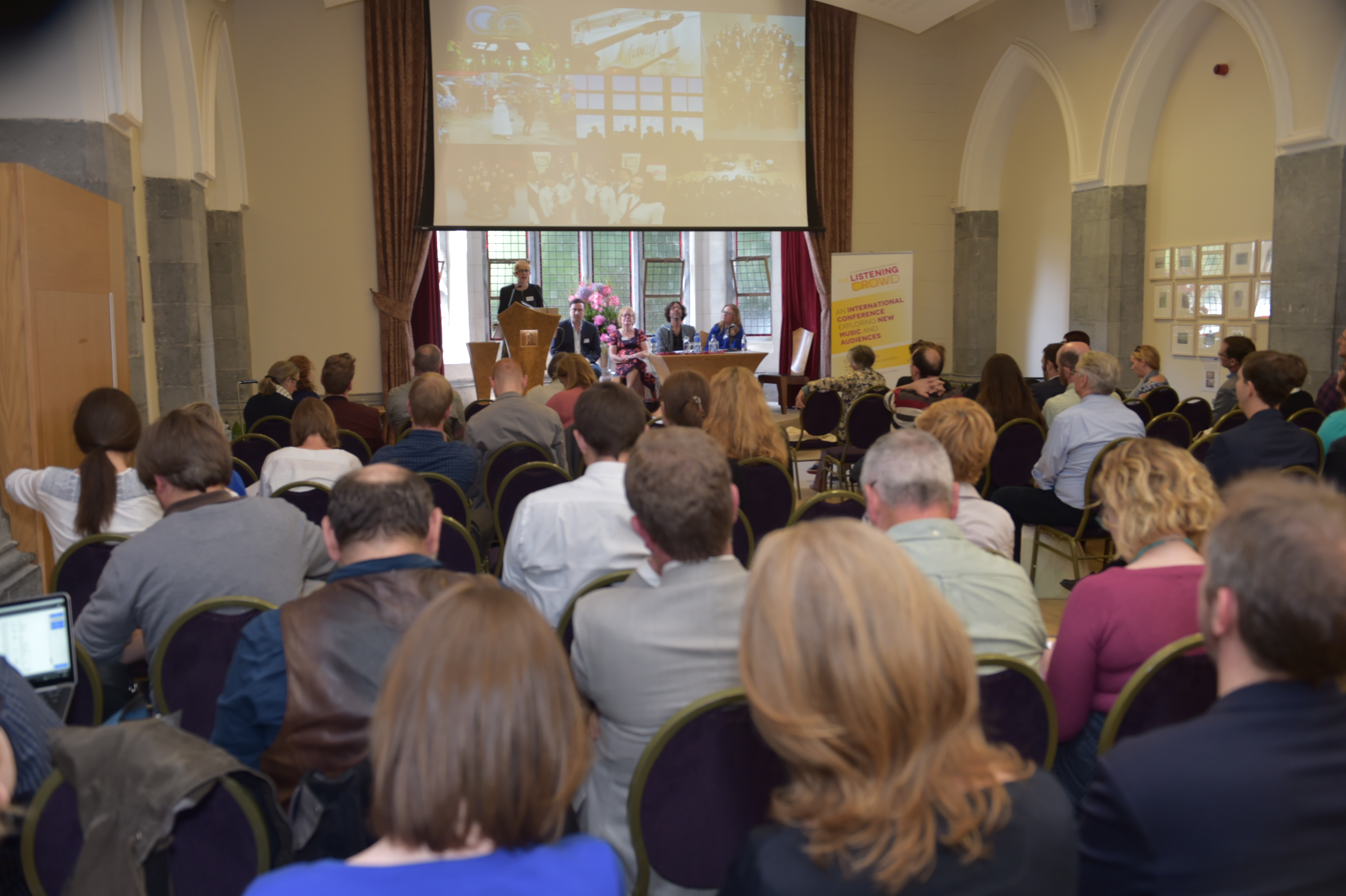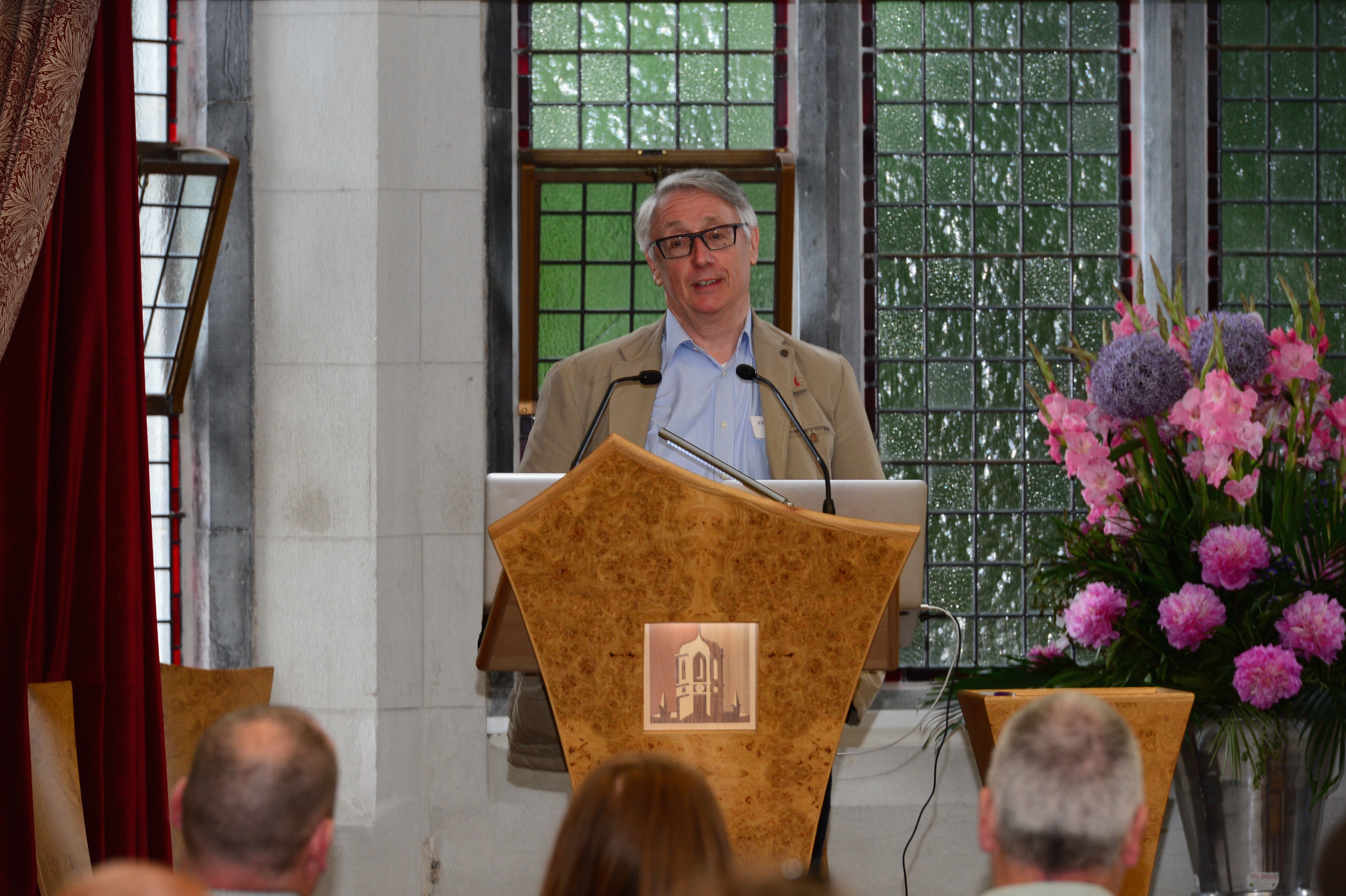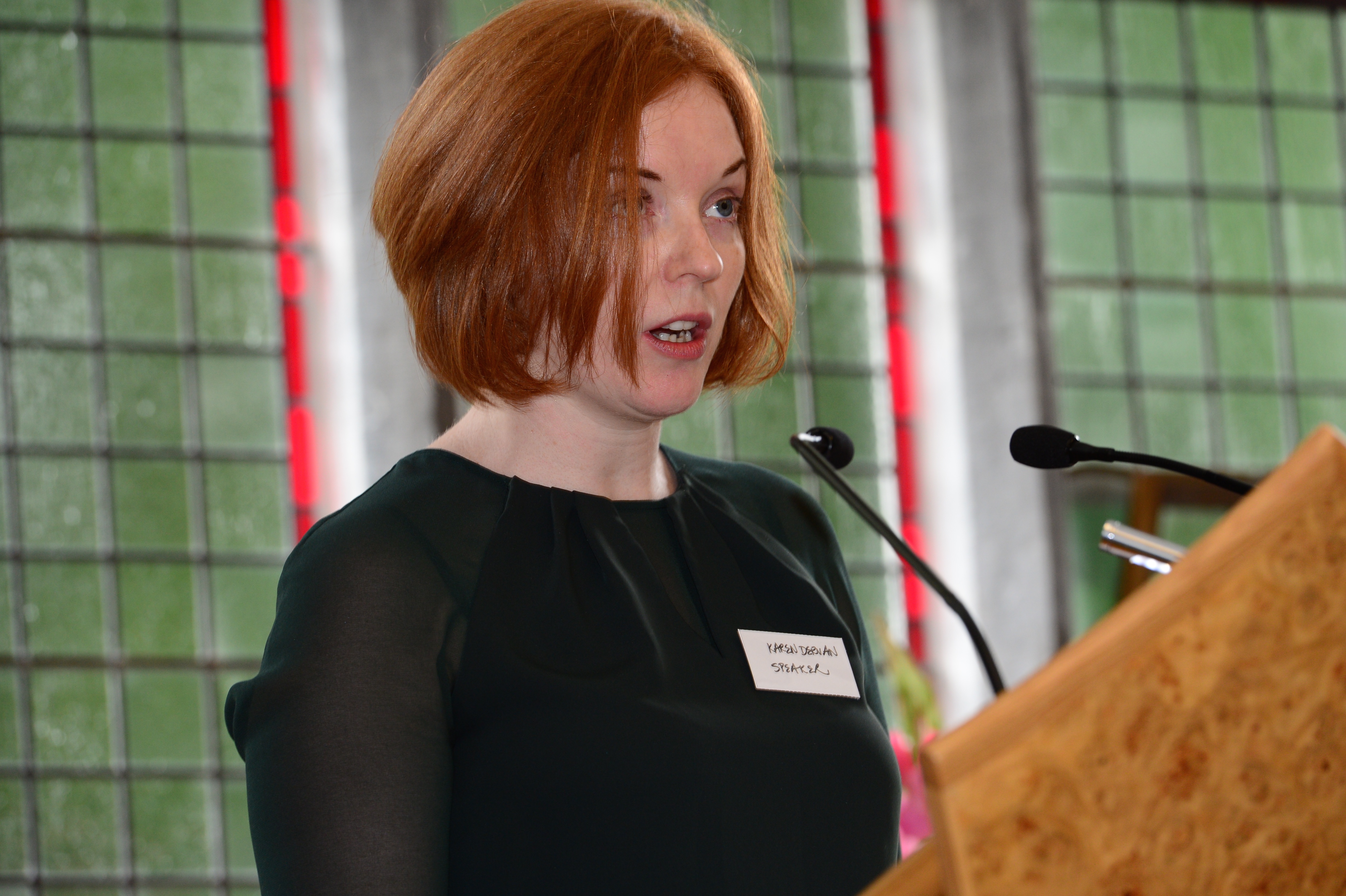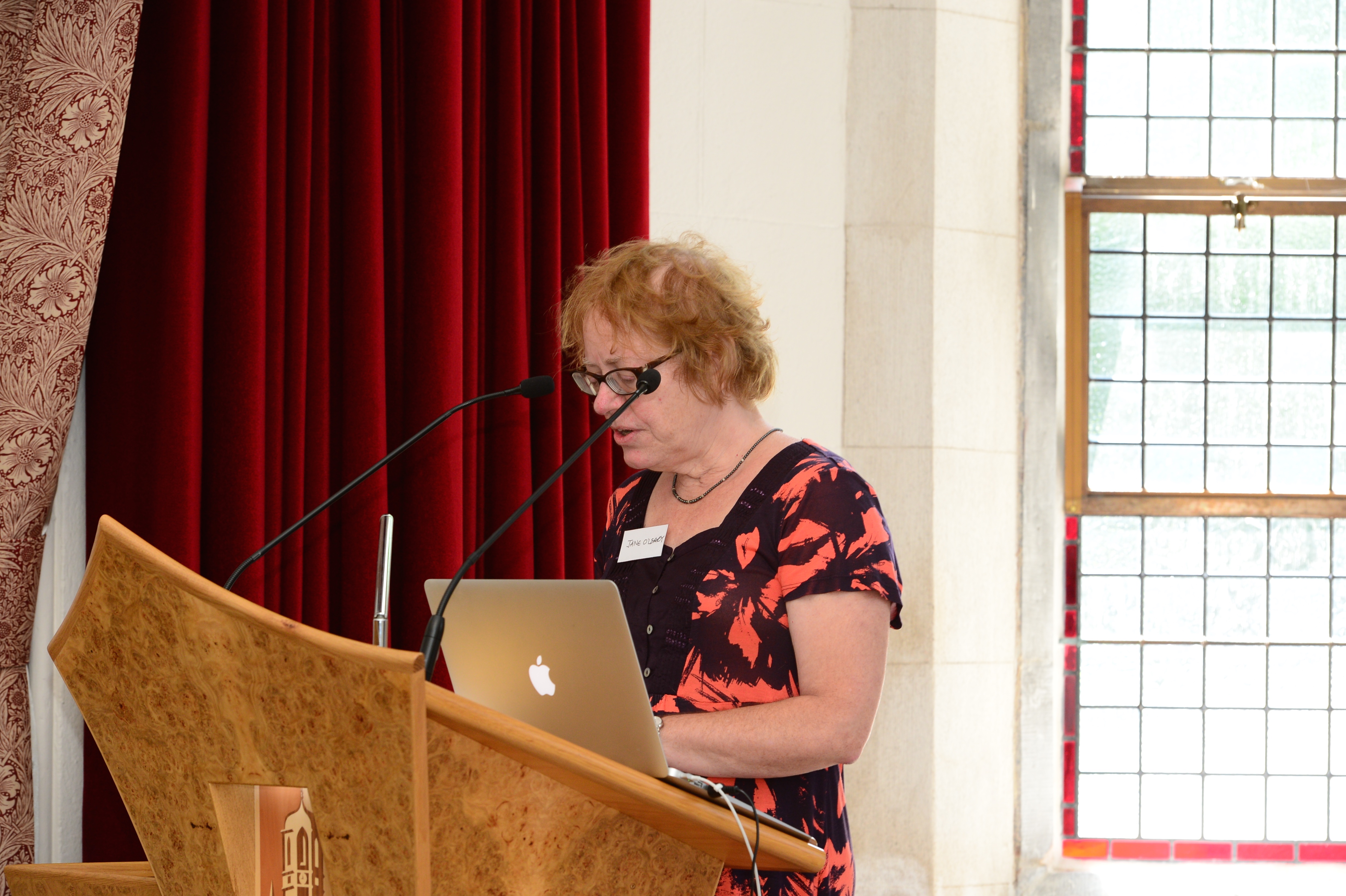The Listening Crowd - Conference Report
Composer and writer Anna Murray reports on CMC's Listening Crowd Conference, which was held in Galway on 12 June as part of the International Association of Music Information Centre's Annual Conference
The Listening Crowd conference, hosted by CMC at the Aula Maxima in NUI Galway, was divided into four sessions, each taking as its focus a different element of the audience question – why, who, how and what? – with a number of speakers giving their perspective. From concert curators to performers to composers, the day was packed with thought-provoking ideas, though some common ideas emerged in different ways throughout. At the heart of much of the discussion were ideas about performance spaces, curation, and above all, the need for a relationship of mutual trust and respect between listeners and presenters.
Keynote
After a warm welcome and introduction by CMC director Evonne Ferguson, composer Kevin Volans delivered a keynote address titled If you need an audience, we don’t need YOU, a reference to Morton Feldman discussing composition and its relationship to the listener. The tone of this address – incisive and demanding – set the tone of the day, creating an environment in which both speakers and audience members felt both challenged and free to question and venture opinions, while the content of the speech itself was at the heart of much discussion among listeners throughout the day.
In his role as a ‘devil’s advocate’ for the conference, Volans discussed how serious music composition should not be confused with entertainment, and how its own development may not necessarily be commensurate with the interests of an audience, though it does require that audience to collaborate and to listen with intent. Volans brought the crowd through a short history of the changing perception of serious music, through the investment in the 70s of rich countries into the arts as a means to show intellectual superiority, to the 80s in which it became a form of ‘upmarket entertainment’ and an adjunct to an image of a certain desired lifestyle.
A continuous devolution of the artform from then to the present day has led, in Volans’ eyes, to a celebrity focus, an obsession with bums-on-seats over audience experience, and a decline in weight and length of works – the industry standard of ‘more for cheaper’. This celebrity culture has in turn led to an unhealthy emphasis on youth, and young composers, in which early successes and early commissions devalue composition as a vocation rather than a career. A key to this could be better, longer and further education – young composers should be supported in pursuing their studies for at least ten years, becoming steeped in their field and creating larger scale and more adventurous music. In Volans’ own words, “we need time to get deeper into the thought, and deeper ideas require time to absorb and develop”.
Though time constraints of the day’s packed schedule meant that some points of the keynote speech had to be skipped, or at least abbreviated, Volans finished with a strong appeal to composers to establish a relationship of profound respect with their audience which sees the ideal concert as a kind of gesamtkunstwerk with a focus on quality over quantity as well as flawless production, in opposition to the current trend of underground new music events. In summary: better education, better curation, and higher standards for concerts all round.
Session 1 – ‘Why listen?’
The first session of the day focussed on what motivates audiences to listen and engage with live music, from the experience of four music promoters, who each introduced the varied ways they have approached the issue of audience engagement in their own work. Some clear common threads occurred between the speakers, which would be echoed again later – the importance of space, community and communication.
The first to speak was Brian Carson, founder of Moving on Music in Belfast, whose path to music promotion has given him a unique perspective of the possibilities of the special relationship between audience, performers and composers. A firm believer that no arts scene could be healthy without an underground, Carson actually found a way into new music promotion through a visual arts group, and from there through jazz, and the realisation that this created a space where people of all backgrounds could come together: a vision he carried through to the establishment of Moving on Music in 1995.
Moving On Music reaches its audience through a combination of touring, concerts, continuous professional development and outreach – Carson was the first but not the last of the day to stress the importance of getting new music into schools at an early age, where children can engage directly. They have also found some success in reaching listening audiences through ‘clustering’ events and small festivals such as Brilliant Corners. The key though, to Carson, is working with people to perform to the very highest level, and in getting people together as often as possible to network and exchange ideas.
The thread of community space was picked up in the introduction by Lucy Railton to her work with the London Contemporary Music Festival and concert series Kammer Klang, two projects which pride themselves on creating new listening experiences through exploring architecture, dance and more. In London, there is a strong community of grassroots-level new music events in unusual spaces, with new performers, curators and audiences emerging constantly. The key for all these events is a space where this community can meet and which softens the divide between music and listener. All performances or presentation is a celebration, an experiment and a discussion and it is essential, in Railton’s words, for the audience to feel considered and cared about when invited to take part. These spaces also allow the performers and presenters to take risks with their programming, presenting material that is totally unique and opening music out to input from theatre, dance and much more.
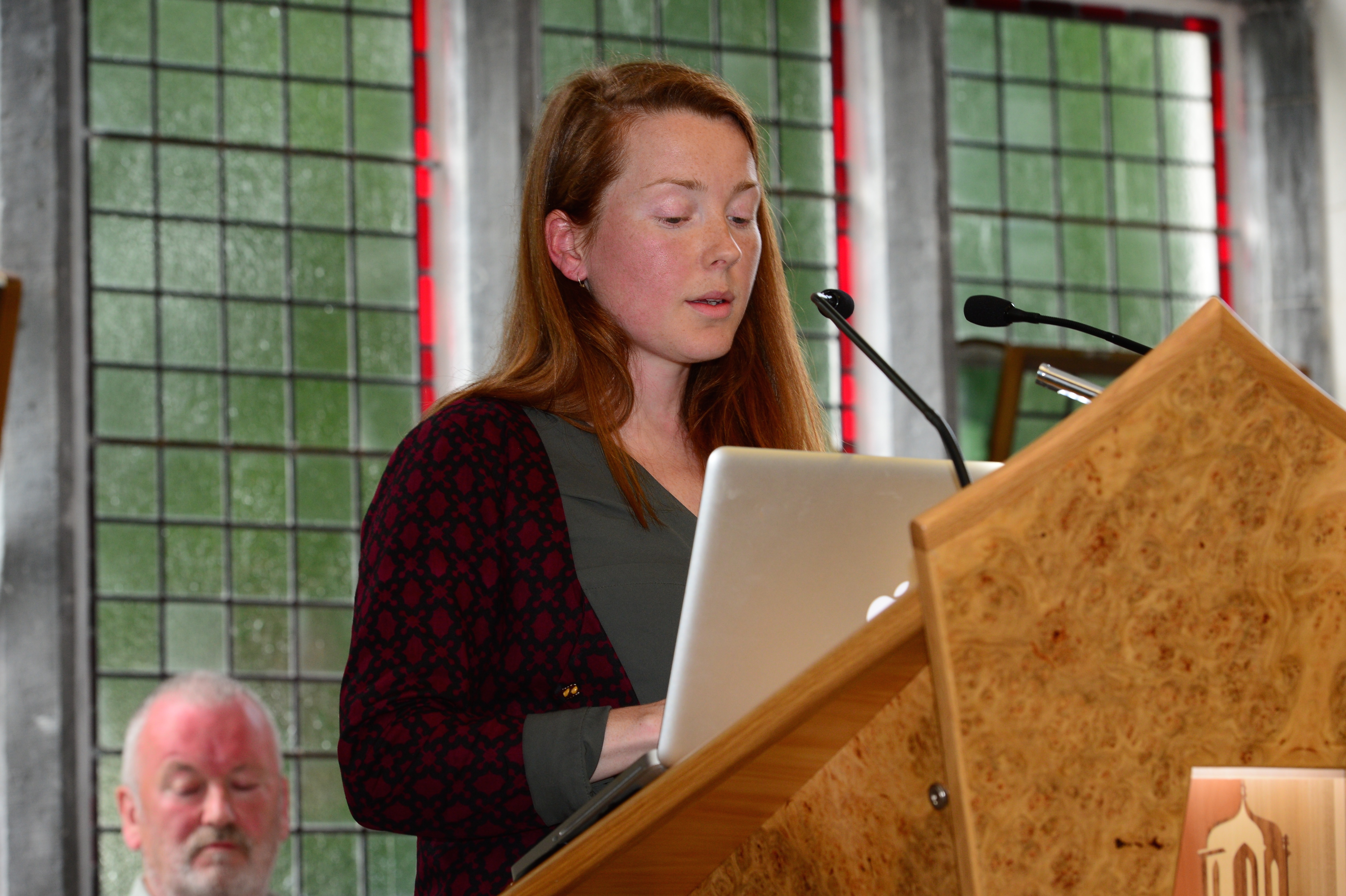
The venue and context of performance has also had an impact on Kaleidoscope Night, according to co-director Karen Dervan who challenged the audiences with questions about the relationship between composer and presenter/performer. Kaleidoscope has a strong reputation for Irish contemporary music presented in a relaxed atmosphere – a reputation which they believe has allowed their audiences to be more receptive to new music, without undermining serious listeners for serious music.
Dervan is herself a performer, and sees herself as a conduit of music from composer to audience and identifies what she sees as a gap which sometimes appears between composers’ intentions and audience members’ experience – in cases where very technical ideas are the primary motivation, the audience’s right to listen and experience a performance on their own terms can be compromised by a need to read or listen to a complicated explanation. Both performers and presenters are invested in properly realising new works, but for curators, the end point is always the listener, and they must trust and have conviction in the work and in the composers.
This multiplicity of identity alluded to by Dervan in her existence as curator and performer is clearly also felt by Fergal Dowling of Dublin Sound Lab, as he discussed how best to define what the company does. Both directors (Dowling and Michael Quinn) at times perform, at others create, and at yet others, curate. At its heart though is an artistic rather than practical idea – a desire first and foremost to present new music that they themselves were excited about. This flexible approach to projects and concerts allow them to explore and to create works which engage with the audience in a creative way. Performance projects, such as Three Places which saw a programme of new music spread across three points over Dublin city, get the audience involved in the piece in a way that is about more than just that moment, but also about the city itself.
Session 2 – ‘Who’s listening?’
The second session of the day moved away from how presenters engage with their audience towards how we can figure out who makes up our audiences. Taking a variety of approaches, such as Europe-wide performance projects, audience feedback systems, and of course, our own ears and experiences, the speakers in this session explored who are the listeners at a concert, and whether we are listening to them?
Tackling the question through a systematic international project called New Music New Audiences, Heather Maitland made some interesting observations about who was going to concerts, and how some presenters managed to double or treble their usual audience numbers by paying attention to the data. Maitland identified a number of listening ‘taste types’ through word analysis on a spectrum from analytical listeners to emotional. Maitland also reiterated the importance of reaching younger listeners, as research has found that by the age of 12, musical preferences, which related to language acquisition and identity, are fixed, and also noted that young adults are looking for new and different experiences, especially with visual and theatrical elements.
In particular New Music New Audiences focussed on the ‘omnivore’, arts enthusiasts with relatively low knowledge base who attend performances relatively infrequently, but attend a wide range of events. They discovered that what we say about music really matters to these omnivores, and that the language of marketing creates an expectation; collaborating ensembles and presenters found they had bigger audiences when marketing messages focussed on the concert as a special event, with a unique venue and experience. Again, space is key, with Maitland going so far as to say that ditching the concert hall altogether in favour of cosier venues more conducive to conversation will introduce a wider audience to contemporary music, as the opportunity to share the experience afterwards is very effective in ensuring a returning audience.
David Pay of Canada’s Music on Main concert series has also taken a systematic and analytical approach to the question of audience make-up, using an audience feedback tool called Intrinsic Impact. Motivated by a desire to refocus the series programming towards its audiences, and to figure out how people are transformed by the experience of the arts, Pay discovered, through post-concert feedback, a social gap, or a lack of connection in the communities of Vancouver.
The data gathered by Intrinsic Impact, which asks a number of questions of concert attendees, made it clear that one of the most important reasons that people attend Music on Main concerts is to discover something new and to be inspired. There were also high numbers of people hearing types of music or composers they had never hear before. This information allowed Pay to explore how to reframe the series programme, to encourage people to feel more socially connected in coming together for an artistic experience.
As with the anecdotal evidence of the presenters in earlier sessions, the Intrinsic Impact data showed that engagement of the performers with the audience and emotional resonance of the performance are the most important things to increase audience engagement. And in contrast to Pay’s own as well as Maitland’s observations, social connectedness and an opportunity for conversation did not appear to be so strong a motivator, but the question is, would it be missed if taken away?
The next speaker, composer and director of Concorde ensemble Jane O’Leary, brought her experience and ear as a composer to the question of ‘Who?’, reflecting the call in the keynote speech to see the composer as a specialist and to see new music as serious music rather than entertainment. She noted that promoters too often blame new music for bad audiences, rather than bad listeners, and reminded us all that we need to consider carefully all the different forms of listening taking place at a concert.
Audiences are composed of listeners, each of whom brings their own memory, experiences and atmosphere to bear on the listening experience. More than that, in a concert, there are many types of listening happening during a concert, for example the musicians listening to each other and to the audience, and the quality of this listening directly effects the sound produced. The composer is listening, responding, and evolving their own work. O’Leary also reminds us that audiences also listen to each other and are in the context of a social environment, and are influenced by other listeners nearby, especially the composer, if present. For her, for music to survive it must challenge the listener, but it will never be for everyone, and it needs the support of its fans.
From presenters to composer to performer, the next speaker had yet another type of relationship with their listeners: Adrian Mantu of ConTempo Quartet, who were a participating group in New Music New Audiences. Trying to incorporate the findings of that project into the ensemble’s programming, ConTempo again found that their audiences are predominantly adults who know little about classical music but who are ‘omnivores’ – interested in writing, visual art, pop music – and looking for interesting experiences. To address these audience members, talking is the most important thing, introducing the piece though not in an academic way; Mantu also found that having the composer themselves introduce the piece can have a profound impact on the audience.
Having done some direct work with children through the Our Tunes initiative, Mantu again emphasised that young audiences are perfect audiences, who listening to new music without prejudice and with open eyes, mind and heart. In his work with over 15,000 primary students, in giving short introductions to the history of classical music, contemporary music is by far the most popular. However, he also questions as to whether composers really consider the venue of their performance, and notes that it can be stressful for people with children to attend concerts, something which ConTempo are trying to address with a new platform for music for children in Galway.
The final speaker of this session, Neva Elliot of Crash Ensemble, has also considered the ‘distilled’ audience member for a Crash concert into a perfect person they’ve named Paul. Paul is a male 30-40 year old, probably works in academia and is specifically interested in new music. If they put out information, Paul will find it, and Paul will come, but the question is how to get the information to people who are not Pauls.
Their average audience member is culturally interested, enjoys music beyond just new music and is looking for an experience beyond just live performance: the ‘omnivore’ rears their head again. This is all useful information which can be used to communicate with new audiences. Cross-pollination with other media, such as dance, theatre or visual art call out to the culturally curious, guest artists such as Iarla O’Lionaird or Bryce Dessner satisfy the music lovers, and unique informal and intimate events that treat audience like friends and community create an experience beyond live performance. Crash have also embraced broadcasting, recording, video and more, all of which have led to them building a trust with their audience, so they can continue to take chances and risks.
Session 3: ‘How are we listening?’
The third session of the day proved to be the most diverse in approaches to the topic, from concert settings, to the future of radio, to post-internet art. As discussed in her introduction to the session, Karlin Lillington, a technology and business writer for the Irish Times, music is one of the first fields to be affected by changing digital technologies, and these changes need to be embraced, and as with earlier discussions, curation and communication seem central to how to do so.
Bernard Clarke, presenter of RTÉ lyric fm’s new music show Nova, began this session with an animated discussion of the listener as a ‘magical being’ for radio as it transitions from analogue to digital. According to Clarke, there is serious competition in Ireland between stations, but also between pubic radio and the instantaneous nature of social media. The history of radio is a history of audience interaction, and whether or not radio is seen as a tool of distribution or of communication. Through social media people can now communicate directly back with radio broadcasters, changing the nature of the relationship between radio and listener.
In the face of streaming and podcasts, independent radio is exploring different and innovative ideas, as are the BBC, with combinations of live, pre-recorded, archived recordings and more, but Clarke asks whether public radio has a responsibility to present new music where possible rather than respond to requests. As with concert promoters, curation is the way forward for music radio for him: in his words, becoming a filter, digging down, bringing material together, and building trust with your audience.
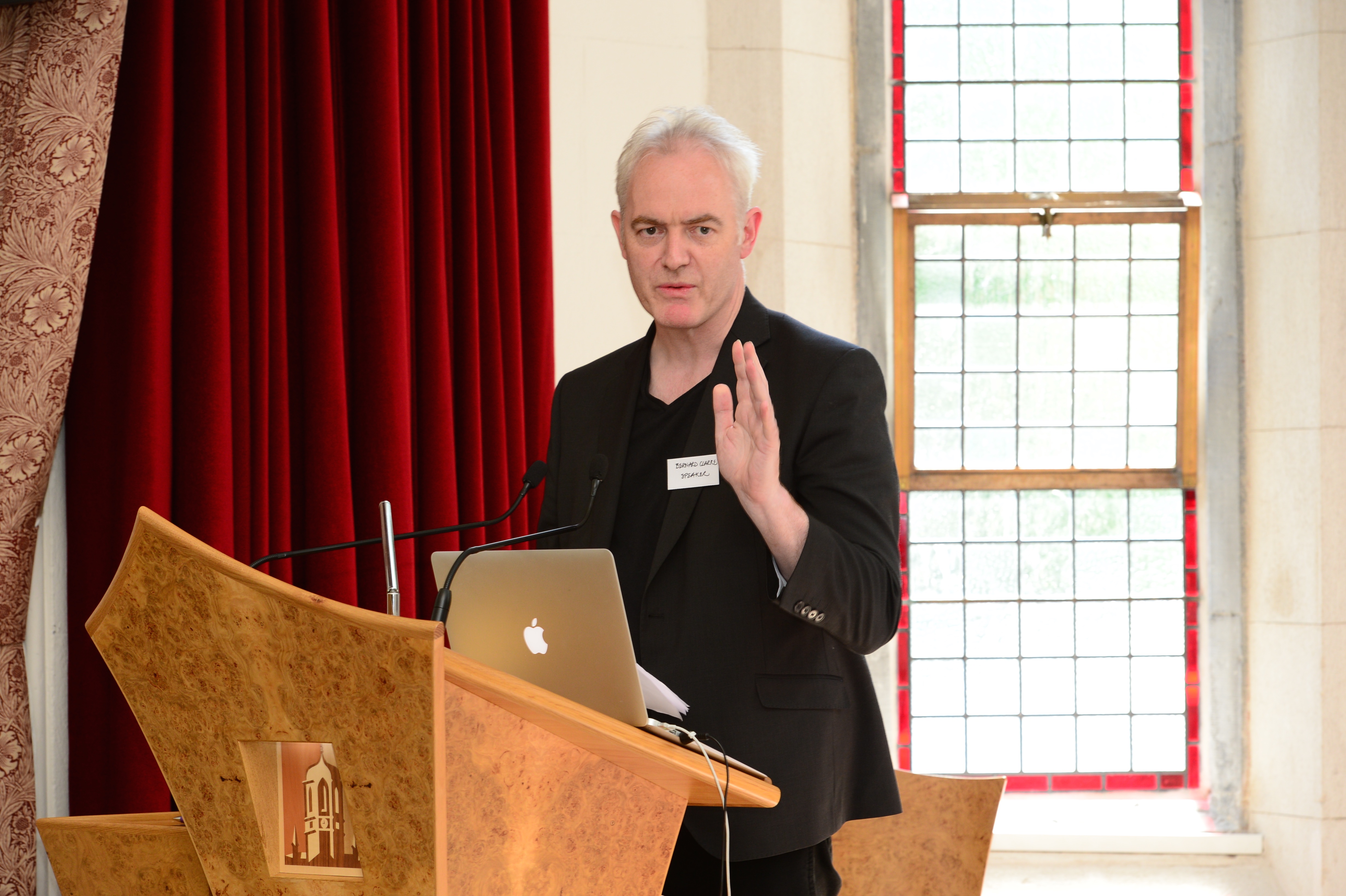
A curator himself, composer Peter Moran, says that anecdotal evidence and the analytical data appear to say the same thing, that leaving the concert hall behind is key. He noted how difficult groups such as the Irish Composers’ Collective or Association of Irish Composers find it to encourage people to go to the concert hall to hear music and discuss it afterwards, when people are eager to leave and get to a pub.
Moran also makes an argument for leaving the concert hall from the artistic side: simply that a lot of music can’t be performed in a concert hall setting. There is increasing interest in works and events that use space, manipulate the experience through technologies, or rely on audience participation. For Moran, the evidence for the need to rethink the issue of audience engagement is in the number of new events cropping up, such as Bastard Assignments in London, or the Listen At sessions in Dublin. This reflects the fact that few people listen to just one type of music, and few people play just one type of music – in Moran’s words, by only programming one type of music, you’re ignoring the context of that music’s creation, and denying the audience the chance to experience it. Similarly to Jane O’Leary earlier, he reminds us that when we speak about listeners we need to include performers and composers, who are themselves the audience.
Composer Jennifer Walshe returns the focus to technology, in particular how she took a new approach to thinking about and experiencing the internet as a source material. Walshe makes the point that trying to fit the concert experience into the internet’s modes of distribution is like fitting a square object into a round hole; new music creators can instead focus on what the internet offers us, as a snapshot of life in 2016. For Walshe, ‘listening’ to the internet is exploring the texture of now.
The internet has allowed new forms of creation and sound to emerge that have yet to be embraced by new music, but which are becoming ubiquitous in other spheres. As an example, Walshe mentioned The Life of Pablo, the recent Kanye West album, released for streaming and then recalled, changed, and re-released. She also mentions open-source coded albums of jazz music, or the ASMR (autonomous sensory meridian response) phenomenon, in which thousands of people are listening to ‘experimental’ binaural sound art, but under another name. Online audiences are incredibly participative, commenting, sharing and spreading the word more than they ever would offline. Though Walshe is clear that her work is not deliberately setting out to find new audiences online, her creative explorations of the internet exposed new ways of working and thinking about audience relationships in an increasingly-connected world.
An interesting question from the floor asked if promotion is the joint responsibility of presenter, composer and performer, and triggered some interesting final thoughts from the speakers. Jennifer Walshe said we need to start thinking hard about how we interact with social media, and curation of our social media and internet output and feeds will become increasingly important, while Peter Moran reiterated the earlier observations that a sense of community is vital, and that we need to trust the community to help spread the word.
Session 4: What helps us listen?
The final session of the day brought together guests Ed Harsh of New Music USA, Marcus Gammell of Ars Acoustica and Kenneth Killeen of the Improvised Music Company for a short panel discussion to reflect on the main thoughts of the conference, chaired by IAMIC President Susanna Eastburn.
First and foremost on the minds of the panel seemed to be the idea of relationships, and thinking of audiences as something more than ways of covering costs. As Ed Harsh put it, “what we do is not the abstract creation of an object, but the creation of relationships…it’s part of the art, it’s not a side-thing, it’s about having that relationship as part of the art.” Kenneth Killeen’s main take away from the day was the multifaceted nature of audiences and our relationship to them, and how, as live art is competing with the “immediate gratification” and a culture of now, experiential events might be the way forward. In contrast, Marcus Gammell stressed that perhaps really the best way to build an audience is to make a good programme, to simply fit things together really well to resonate with your audience’s world.
Susanna Eastburn summarised some of the main thoughts of the day in the simple observation that “listening well is hard work”. In putting on events we are asking people to stop what they are doing and come listen to us, but sometimes we are not that interested in listening to them. If you listen well you might hear uncomfortable but obvious truths. Perhaps by listening to our audiences and thinking about what we present and where and how we present it, people will come and enjoy themselves. Kenneth Killeen followed this up with a discussion of active and passive listening, and observed how the increasing commodification of art is encouraging passive rather than active listening; active listening is also what organisations need to do.
The last few minutes saw some interesting comments from the floor, including some thoughts once again on the importance of teaching literature, painting, art as well as music from a young age. The final observation came from composer Karen Power, that all of what is being discussed takes time, and happens across time – music evolves and listeners evolve, we need to remember that this is a constantly evolving platform rather than a final solution.

